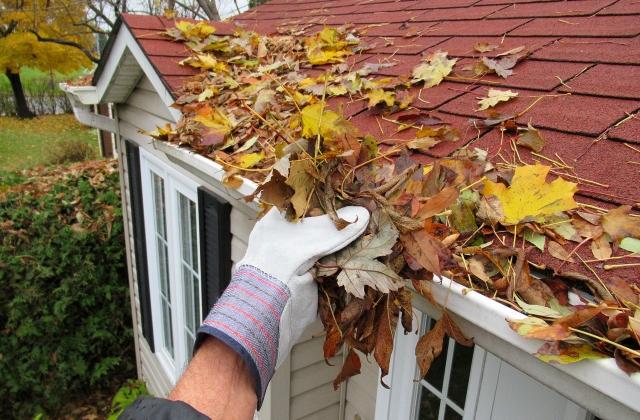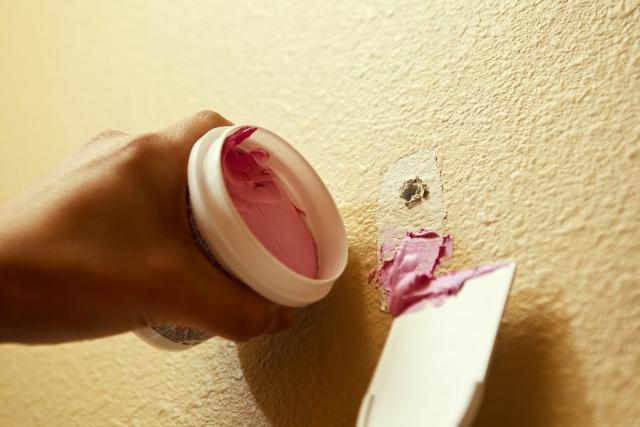By Alecia Pirulis
Top 10 Fall Maintenance Tips for Landlords and Property Managers
When the temperature dips and leaves start to fall, images of cozy evenings by the fire and pumpkin spiced drinks come to mind. As nice as autumn is, however, in many parts of the country it’s also a forewarning that deep freezes and piles of snow are just around the corner.
Start preparing now for winter’s assault on roofs, siding, and walkways by doing these 10 fall maintenance tasks. You'll make sure your rental property is ready for the impending winter weather and that your tenants stay warm, dry, and happy.
1. Clean the roof and gutters
Let’s face it: cleaning the gutters isn’t a fun job. But it is something you need to do every year. While you’re at it, use a rake and a leaf blower to get any fallen leaves off the roof. Clogged gutters and piles of leaves and twigs in roof valleys are the main reasons ice dams and icicles form. In addition to creating extra weight for the roof to support, these freezing weather hazards eventually melt to form pools of standing water that can cause leaks.
If you are considering getting gutter guards, choose wisely. Installing gutter guards can keep leaves and debris out but be wary of wire mesh guards. While these can keep out large debris, pine needles and small leaves can get in and block water flow. Mesh guards prevent you from reaching into the gutters, which can make cleaning that much more difficult. Alternatives include micromesh guards, which keep out pine needles and other small debris, and hinged guards which you can lift out of the way when cleaning.

2. Trim overhanging branches
Let’s face it: during the winter, ice happens. Iced-over branches that overhang the roof can snap off and cause damage. They’re also providers of roof debris that can cause ice dams, and they provide a bridge for rats, squirrels, and other pests looking for a warm place to spend winter to get onto the roof and into your attic.
Branches that could interfere with powerlines also need to go. Working around power lines is dangerous, so you’ll likely want to call in a pro to tackle this job.
While you are cleaning up the branches, don’t forget to prune back ivy and other creeping vines that have reached roof height.
3. Rake the leaves
Autumn wouldn’t be as beautiful without falling leaves. But integral part of the season that they are, these colorful paint splatters on nature’s canvas are also a major headache. Raking leaves is a fall maintenance job every property owner needs to tackle. If you prefer not to do this yourself, assign it to your renters in the lease and offer them a small rent reduction as an incentive. You might also want to consider hiring a professional landscaper to maintain your property. Removing and properly disposing of leaves protects the lawn and gardens, prevents slipping hazards in the rain, and keeps the neighbors — and even the HOA — happy.
4. Check weatherstripping and insulation
Drafts coming through unsealed doors and windows drive up the heating bill and can make tenants uncomfortable. It might even cause them to become ill. Foam weatherstripping lasts from five to 10 years, depending on quality, and should be replaced when it cracks or shrinks. The best time to do this is in the fall, after the harsh, foam-degrading summer sunshine ends but before the cold winds of winter start to blow.
You can control drafts coming through the window and door casings by removing the casings and spraying foam insulation in the gap between the window or door frame and the studs. You can hire someone to do this in a day, and if you’re paying the heating bills, you’ll recover that cost by saving as much as 10 to 15 percent on your energy bill this winter.
5. Clean or replace HVAC filters
Cleaning and replacing HVAC filters is a routine task you’ll want to do every year, so make it part of your fall maintenance regimen. Central heating systems work around the clock during the cold winter months. Clean filters will ensure the system is working efficiently. Replace all the return air filters as well as any filters on the heater housing itself.
6. Patch holes
Just as critters are looking for a way into your warm, cozy home from the roof, they could be mounting a ground assault, as well. Resourceful animals can get through holes as small as ¼ inch in diameter, so patch all holes no matter how small. Caulk or foam spray work great for these smaller holes, while wire mesh, sheet metal, or plywood can cover larger ones.
While you’re at it, check the attic vents for holes or frayed edges. Look for rot in the eaves or foundation. Dig it out and fill with epoxy filer to prevent rodents from eating their way into your property.

7. Drain exterior faucets
One of the most common hazards of winter are burst water pipes. This often occurs in pipes that feed hose bibs on the side of the house or in the garden. To prevent burst pipes, turn off the valve to these faucets, then open them and allow the water to drain. It’s a good idea to leave the faucets slightly open to make sure that any ice that might form in the pipes has room to expand.
8. Turn off and drain the sprinkler system
Most sprinkler systems have a drain valve located at the lowest point in the system. If you can’t find the valve, you might need to have one installed. To use this valve effectively, you first need to turn off the main water supply, then open the valve for each zone while the drain valve is open. This allows the water backed up behind each zone valve to flow out through the drain.
9. Check and clean the chimney
If your property has a wood stove or fireplace, yearly chimney maintenance is a must. Creosote builds up quickly. If a spark from the lit fireplace catches the creosote, it can cause a major fire. It’s best to leave this one to the professionals. Not only do you need special equipment, but creosote is a health risk. It can cause major damage to the liver and kidneys if ingested, and even just coming into contact with it can cause skin rashes and irritation. Don’t forget to check the damper and clean the spark arrestor.
10. Conduct a fall maintenance safety inspection
During the summer, loose decking boards and rotted stair treads are irritating. In the winter, buried under ice and snow, they become a hazard. When you’re replacing popped nails or rotted boards, pay attention to the railings, especially those on outdoor staircases. You want to make sure they can support someone who loses their footing. If you want to help prevent slips from occurring in the first place, consider applying a non-slip coating to the treads.
Do yourself a favor and tackle these maintenance projects now, when the days are crisp and the skies are blue. Save yourself from having to make that late-night trek in snow and ice for emergency repairs this winter. Not only are emergency repairs a headache, but they’re often quite costly. If you can spend some time and a little bit of money now, you can prevent more expensive repairs later on and protect your investment.
